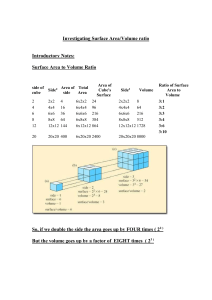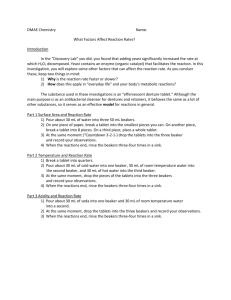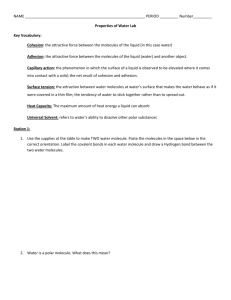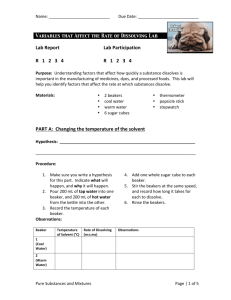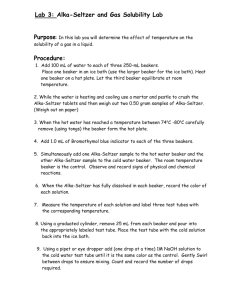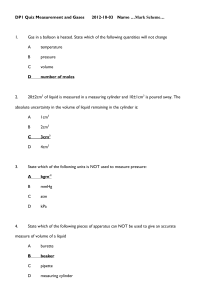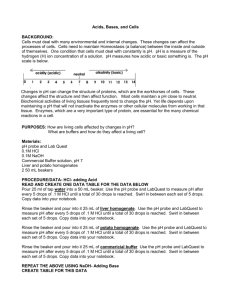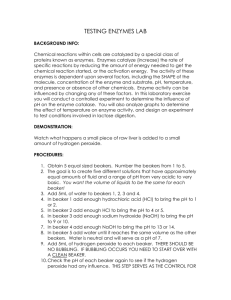Properties of Water Lab
advertisement
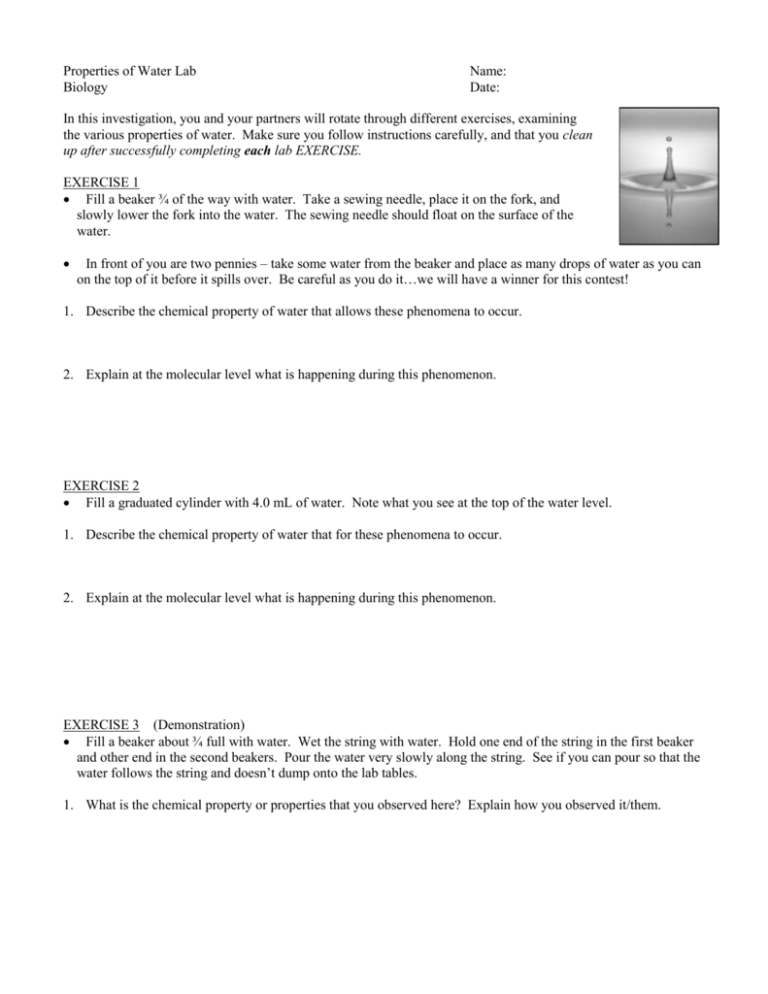
Properties of Water Lab Biology Name: Date: In this investigation, you and your partners will rotate through different exercises, examining the various properties of water. Make sure you follow instructions carefully, and that you clean up after successfully completing each lab EXERCISE. EXERCISE 1 Fill a beaker ¾ of the way with water. Take a sewing needle, place it on the fork, and slowly lower the fork into the water. The sewing needle should float on the surface of the water. In front of you are two pennies – take some water from the beaker and place as many drops of water as you can on the top of it before it spills over. Be careful as you do it…we will have a winner for this contest! 1. Describe the chemical property of water that allows these phenomena to occur. 2. Explain at the molecular level what is happening during this phenomenon. EXERCISE 2 Fill a graduated cylinder with 4.0 mL of water. Note what you see at the top of the water level. 1. Describe the chemical property of water that for these phenomena to occur. 2. Explain at the molecular level what is happening during this phenomenon. EXERCISE 3 (Demonstration) Fill a beaker about ¾ full with water. Wet the string with water. Hold one end of the string in the first beaker and other end in the second beakers. Pour the water very slowly along the string. See if you can pour so that the water follows the string and doesn’t dump onto the lab tables. 1. What is the chemical property or properties that you observed here? Explain how you observed it/them. EXERCISE 4 Fill the beaker about ½ full of water, and place an ice cube in it. 1. What happens to the ice cube? 2. Explain at the molecular level why the ice cube behaves this way. EXERCISE 5 (Demonstration) Fill 2 beakers about 1/3 full of water. In front of is a sample of vegetable oil. Pour a small amount of oil into one of the beakers. Observe what you see, then mix with a glass stirring rod, observe, and record your observations. 1. Observations Initial observation: After mixing: 2. Is water polar or nonpolar? (circle) 3. What does this mean? As part of your answer, draw a picture of a water molecule, and identify which region of the molecule assumes a negative charge. 4. Explain at the molecular level what was happening when you mixed oil with water. EXERCISE 6 Take a sheet of waxed paper and add some drops of colored water to different places on the waxed paper. Holding the paper taut, lift the paper and move the drops of water back and forth. 1. Describe how the water moves on the paper, and try to describe the movement based on what you know about water. 2. Did any of your drops mix together? 3. If any of your drops joined together, did any of them later separate as you moved the water across the paper? Why or why not? EXERCISE 7 (Demonstration) Have one student rub the balloon on his/her head so that the balloon is being rubbed over hair for a few minutes. Another student should aim the squirt bottle to the basin. Once the flow of water beings, the “balloon student” should hold the balloon near the stream of water. 1. What happened? 2. Explain in terms of the molecular properties of water. EXERCISE 8 Put a drop of water with red food coloring on the piece of waxed paper. Take a capillary tube and put one end in the drop of liquid. 1. What did you observe? 2. Explain the movement of water in terms of cohesion and adhesion.
